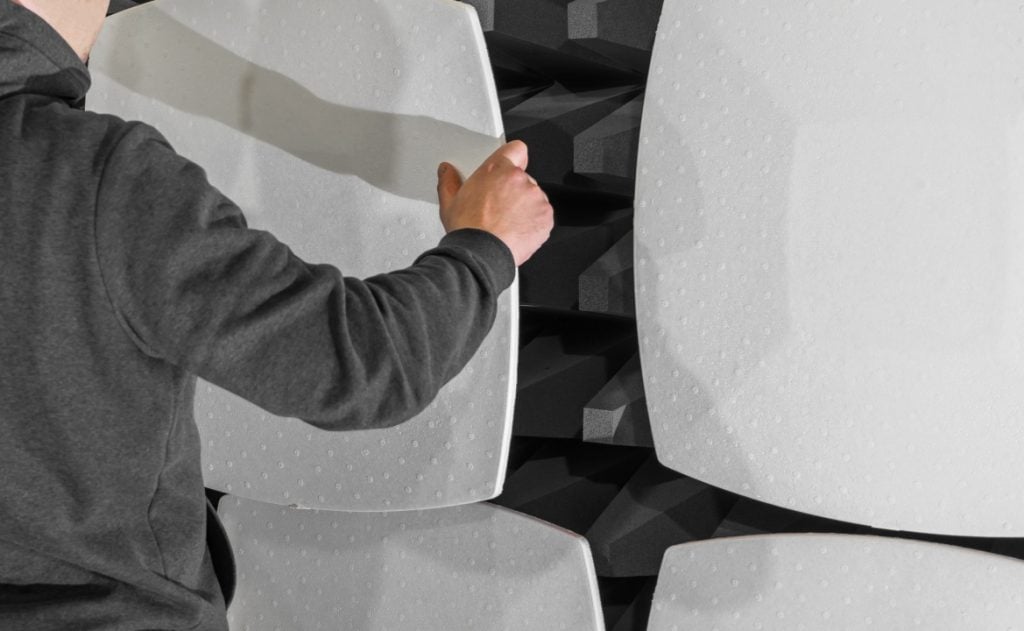Controlling electromagnetic interference is a priority in industries where precision and reliability matter. Wireless communications, radar systems, and electronic testing facilities all require controlled environments where unwanted microwave energy is absorbed rather than reflected. A microwave absorber plays a key role in achieving this by minimizing interference and improving signal accuracy.
Selecting the right microwave absorber depends on various factors, including frequency range, material composition, and environmental conditions. The right choice can ensure optimal performance, whether in commercial electronics, defense applications, or research laboratories.
What Is a Microwave Absorber?
A microwave absorber is a material designed to reduce or eliminate microwave reflections by converting absorbed energy into heat. Instead of allowing electromagnetic waves to bounce off surfaces and cause interference, these materials dissipate energy, improving performance in sensitive environments.
Different industries rely on microwave absorbers to control unwanted signals. Military radar systems, anechoic chambers, and telecommunications networks all require precise electromagnetic management. Without effective absorption, interference could disrupt measurements and signal integrity.
The performance of it depends on its composition and design. Some materials work best at lower frequencies, while others provide broad-spectrum absorption. Choosing the right one requires understanding the specific needs of the application.
Materials That Absorb Microwaves
The effectiveness of a microwave absorber depends largely on the material used in its construction. Various materials have unique absorption properties suited for different applications.
Carbon-Loaded Foam
One of the most commonly used materials is carbon-loaded polyurethane foam. The porous structure allows microwaves to penetrate, while the carbon content helps dissipate energy as heat. These absorbers are lightweight and flexible, making them ideal for anechoic chambers and test facilities.
Ferrite Tiles
Ferrite-based materials offer strong absorption at lower frequencies. They are widely used in RF and microwave shielding applications, especially in environments where maintaining low reflectivity is critical. Ferrite tiles are durable and provide effective absorption, but they can be heavier than other materials.
Conductive Polymers
Some applications require flexible microwave absorbers that can conform to irregular surfaces. Conductive polymers are engineered for this purpose, offering strong absorption in a lightweight, adaptable form. These materials are often used in automotive and aerospace applications where space and weight are concerns.
Rubber-Based Absorbers
Rubber-based absorbers are durable and resistant to environmental conditions such as humidity and temperature changes. They are commonly used in military and industrial applications where equipment must function in extreme conditions.
Each material has advantages depending on the frequency range and environment in which it is used. Selecting the right one ensures maximum efficiency in reducing microwave reflections.
Factors to Consider When Choosing a Microwave Absorber
Selecting the right microwave absorber requires careful evaluation of several factors. Understanding how these materials interact with electromagnetic waves can help determine the best option for specific applications.
Frequency Range
They are designed to work within specific frequency bands. Some materials offer broadband absorption, while others are tuned for narrow frequency ranges. It is necessary to select an absorber that matches the operational frequency of the equipment being tested or shielded.
Thickness and Weight
The thickness of a microwave absorber influences its absorption capability. Thicker materials typically provide better absorption, especially at lower frequencies. However, weight constraints may require the use of thinner, more efficient materials. Applications in aerospace and portable electronic devices often demand lightweight solutions.
Environmental Conditions
Some applications require absorbers that can withstand extreme temperatures, moisture, or mechanical stress. Rubber-based absorbers offer enhanced durability, making them suitable for harsh environments. When selecting an absorber, exposure conditions must be considered to ensure long-term performance.
Surface Finish and Installation Method
Some microwave absorbers require specific surface treatments to optimize performance. Pyramidal absorbers, for example, use a tapered design to reduce wave reflections gradually. The installation method also plays a role in effectiveness, as improper placement can reduce absorption efficiency.
Choosing the right combination of material, thickness, and installation method ensures that the absorber functions as intended.
Applications of Microwave Absorbers
They are used in various industries to improve performance and reduce electromagnetic interference. Their ability to control unwanted signals makes them essential in multiple fields.
Anechoic Chambers and EMC Testing
In electromagnetic testing, a controlled environment free of reflections is necessary. Anechoic chambers lined with microwave absorbers help achieve this by absorbing stray waves and providing a consistent testing space. This ensures accurate measurements when evaluating antennas, wireless devices, and electronic equipment.
Radar and Defense Applications
Military and defense systems rely on microwave absorbers to reduce radar cross-sections and enhance stealth capabilities. By absorbing incoming radar signals, these materials make aircraft, ships, and vehicles less detectable to enemy systems.
Telecommunications and Wireless Networks
Minimizing interference is key to maintaining stable connections in wireless communication. Interference filters help prevent unwanted signal reflections in communication towers, satellite systems, and enclosed spaces, improving signal clarity and reducing performance issues caused by interference.
Automotive and Aerospace Industries
Modern vehicles incorporate a range of electronic systems that generate electromagnetic noise. Weight-sensitive absorbers prevent interference between navigation systems, sensors, and communication modules. In aerospace applications, they help control EMI without adding unnecessary mass to the structure.
Each industry benefits from microwave absorbers’ controlled electromagnetic environments. Proper selection ensures that devices function optimally while minimizing interference.
Trends in the Microwave Absorbing Material Market
The demand for microwave absorbers continues to grow, driven by advancements in wireless technology, defense applications, and research facilities. The microwave absorbing material market is expanding as industries seek improved solutions for EMI control.
New materials and manufacturing techniques are emerging to enhance absorption capabilities while reducing weight and cost. Innovations in nanomaterials and conductive coatings are leading to more efficient absorbers with broader frequency coverage.
One of the key trends in the microwave absorbing material market is the development of flexible absorbers that can be integrated into compact devices. With the rise of 5G networks and IoT devices, engineers require lightweight, high-performance materials that do not compromise system design.
Sustainability is also gaining attention, with manufacturers exploring eco-friendly alternatives for traditional absorbers. The push for greener technologies is influencing material selection, leading to the development of recyclable and biodegradable microwave absorbers.
These trends indicate a growing need for advanced electromagnetic management solutions. As industries continue to push technological boundaries, their role in maintaining signal integrity will become even more significant.
Conclusion
Choosing the right microwave absorber requires thoroughly understanding frequency requirements, material properties, and environmental conditions. Whether used in anechoic chambers, radar systems, or wireless communication networks, the right absorber ensures optimal performance and minimizes interference.
The variety of materials available, from carbon-loaded foams to ferrite tiles, allows engineers to select solutions tailored to their needs. The growing microwave absorbing material market continues to introduce new options, expanding possibilities for improved EMI control.
As technology advances, selecting an effective microwave absorber will remain an essential consideration in designing high-performance systems. By evaluating application-specific requirements, industries can achieve reliable electromagnetic management, improving the efficiency and functionality of their electronic devices.
Caroline is doing her graduation in IT from the University of South California but keens to work as a freelance blogger. She loves to write on the latest information about IoT, technology, and business. She has innovative ideas and shares her experience with her readers.





![‘Frankenstein’ Review – Guillermo del Toro’s Definitive Look At The Nature And Nurture Of Monstrosity [TIFF 2025] ‘Frankenstein’ Review – Guillermo del Toro’s Definitive Look At The Nature And Nurture Of Monstrosity [TIFF 2025]](https://cdn.geekvibesnation.com/wp-media-folder-geek-vibes-nation/wp-content/uploads/2025/10/Frankenstein-175_PF_20240430_20377_R-300x200.jpg)
![‘Wake Up Dead Man: A Knives Out Mystery’ Review – In Rian Johnson We Trust [LFF 2025] ‘Wake Up Dead Man: A Knives Out Mystery’ Review – In Rian Johnson We Trust [LFF 2025]](https://cdn.geekvibesnation.com/wp-media-folder-geek-vibes-nation/wp-content/uploads/2025/10/Wake-Up-Dead-Man-A-Knives-Out-Mystery-300x169.jpg)